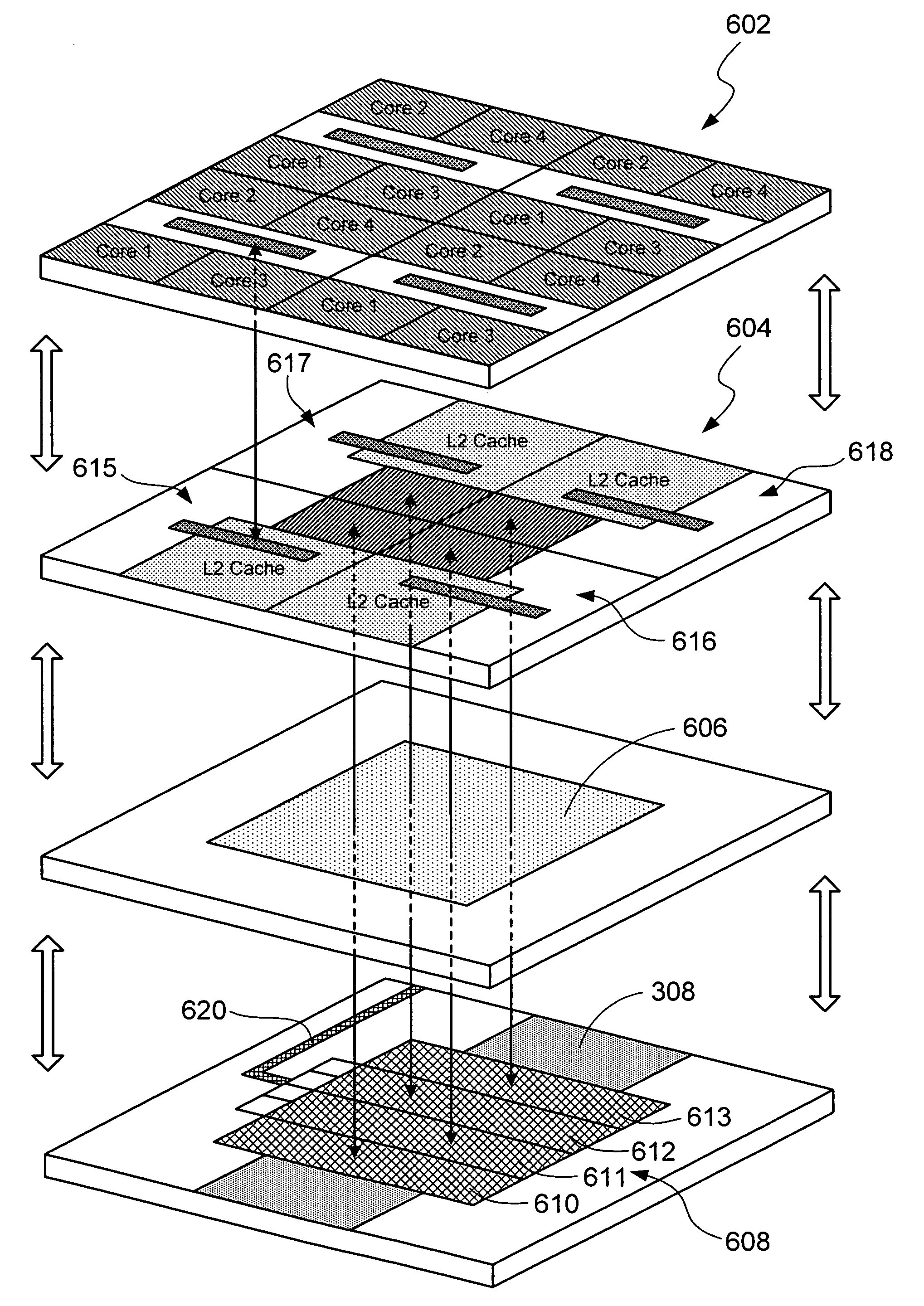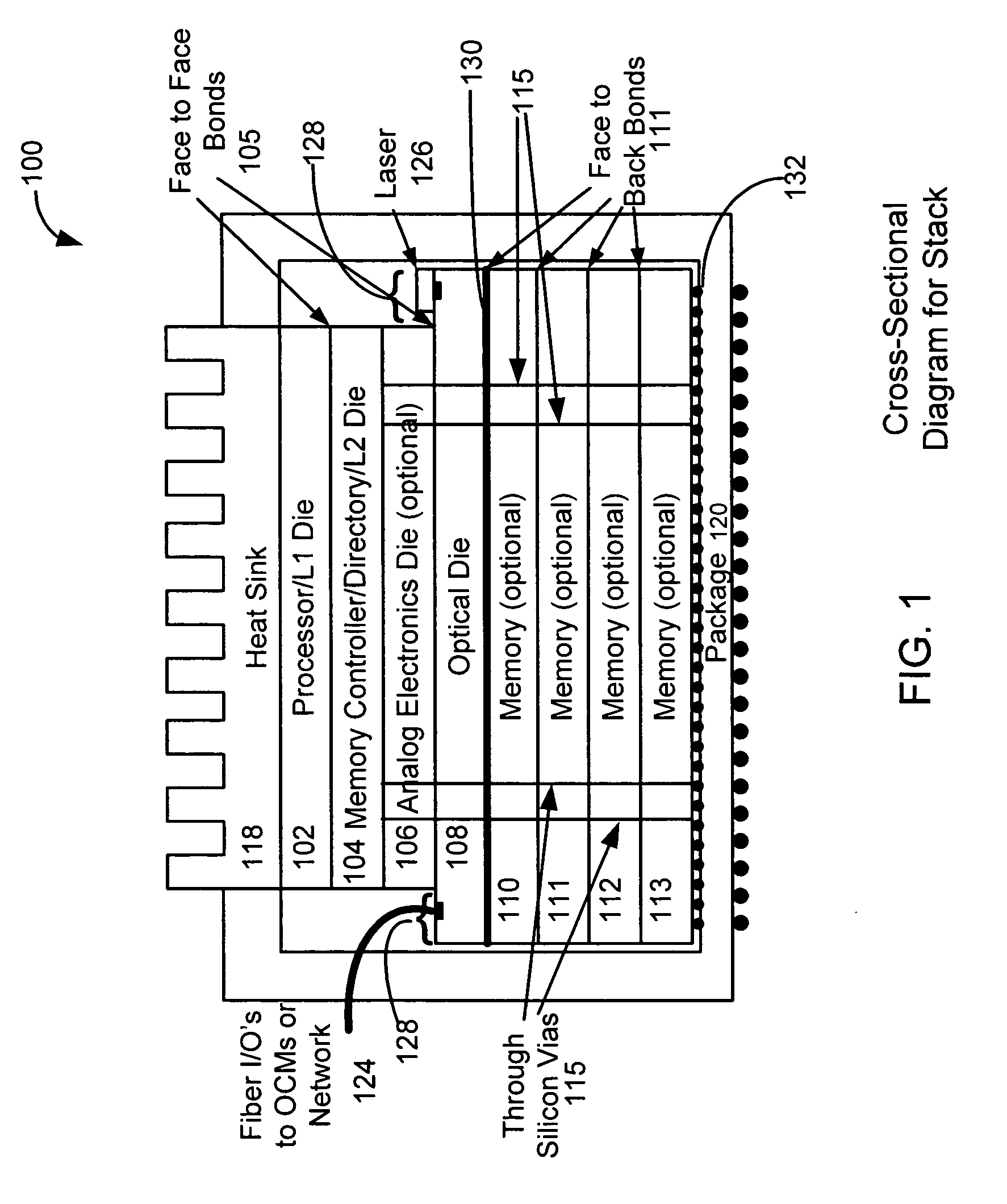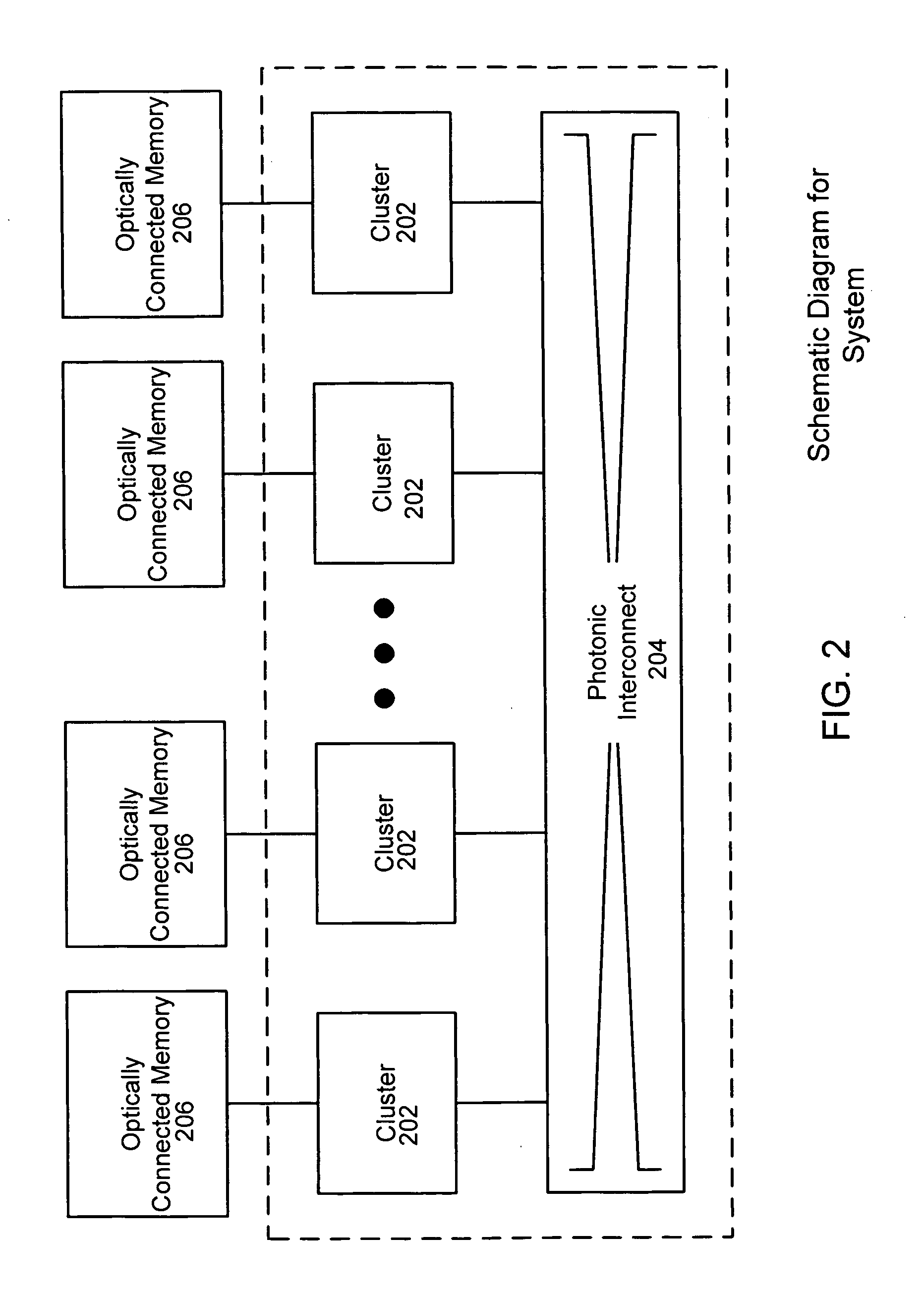Three-dimensional die stacks with inter-device and intra-device optical interconnect
- Summary
- Abstract
- Description
- Claims
- Application Information
AI Technical Summary
Benefits of technology
Problems solved by technology
Method used
Image
Examples
Embodiment Construction
[0022]The present application discloses embodiments of a three-dimensional die stack architecture and packaging techniques. The embodiments disclosed herein may be used to advantageously replace wire-based electronic signaling for the global interconnect with an optical interconnect.
[0023]Advantageously, optical signaling does not suffer from the above-discussed problems with electrical signaling. This is because the energy required to send a bit of information with optics is not dependent on the length of the photonic waveguide for the distances of interest. Furthermore, the energy per bit using optical interconnect scales with VLSI technology and is orders of magnitude less than using an electrical interconnect. This, therefore, substantially mitigates the thermal problem. In addition, optical signaling does not suffer from a length-dependent coupled noise problem and hence the signal integrity problem is not an issue for optical signals.
[0024]Another problem overcome by some embo...
PUM
 Login to View More
Login to View More Abstract
Description
Claims
Application Information
 Login to View More
Login to View More - R&D
- Intellectual Property
- Life Sciences
- Materials
- Tech Scout
- Unparalleled Data Quality
- Higher Quality Content
- 60% Fewer Hallucinations
Browse by: Latest US Patents, China's latest patents, Technical Efficacy Thesaurus, Application Domain, Technology Topic, Popular Technical Reports.
© 2025 PatSnap. All rights reserved.Legal|Privacy policy|Modern Slavery Act Transparency Statement|Sitemap|About US| Contact US: help@patsnap.com



